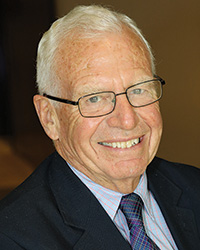
Historic preservation and springtime in Boston - by David Kirk

The commercial property market plugs forward and falls back as demand for traditional property types, office and retail predominantly, ripples and recedes in spite resilient economy. Lower water marks in occupancy are prevalent and persistent, particularly in the older inventory in the built environment in the central business district. Retail occupancy is a derivative of office vacancy which varies by day of the week.
Historic preservation embraced the historic built environment, heralding central location, existing infrastructure, human scale, community/municipal services, in addition to historic and cultural significance. All relate to the central business district nationwide. Sorting through obsolescence, physical, functional and economic, and prioritizing upgrades, feasibity for adaptive reuse is a constant and continuing challenge to the stewards of the built environment, and their constituencies and beneficiaries, most prominently the taxing authorities that assess based on market valuation.
New Markets tax credit (NMTC) incentives for communities can be combined with historic tax credits. The $1.4 billion dollar infrastructure bill included a provision for increasing the federal historic tax credit to 30% , from 20%, of qualified expenditures through 2025, and the bill included several enhancements to the various existing federal tax credit programs. Housing needs and the struggling CBD are high on most political agendas, and fortunately, bipartisan issues.
The Boston Globe Ideas editor Brian Bergstein featured (February 29) an Ideas Section posted to Downtown Crossing (Boston Business Improvement District) a roundup of Globe journalists reimagining Boston, and acknowledging the efforts to jumpstart and expand new directions already under way. Included in Globe Ideas: Sarah Whiting - Why Downtowns Matter; Shirley Leung - What Boston Can Learn From Other Cities; Christine Mehta - By the Numbers: Downtown Boston’s Pandemic Recovery. Not just rhetoric - records, facts, progress in planning, pathways. And now, funding and spending. Nit just a carousel!
Mixed use has new meaning. Live/work has new meaning. Mobility, also a derivative, is evolving and bumpily so. Ridership in mass transit, commutation traffic, parking. Two wheel lanes are being refined and are constantly being reconciled with vehicular and pedestrian passage and flow. Rightfully, and predictably, these changes in demand will impact the economics of the built environment.
Not all properties or markets will decline in value. Demolition is an alternative use. The changes in use are certainly a dynamic, if not yet prevalent. Adaptive reuse has always been a Boston development strategy. And the underlying underwriting of the highest and best use is free form, and pro forma, and capital sources and intermediaries are increasingly sophisticated in risk assessment of repurposing assets.
Start with public benches and bathrooms in recognition of an increasingly outdoor life, aged population, and fitness orientation. Cleaner air. Parks and promenades. Pedestrians. Pauses with each other and with nature. A kinder, gentler community. Intelligence and artificial intelligence. Build and rebuild Boston stronger!
Every community has its own property inventory, layout, grid, mass transit, parkland. Nonetheless, changes in behavior, demographics, economic base, just a few changes impacting demand characteristics, have a national commonality, similarity, pattern.
The ramble and rumble of a new Boston is wearing. Mass transit is busy and struggling with deferred maintenance of all rails, power lines, and other infrastructure as well as rolling stock. The impact of this mess and the related frustration has masked somewhat the tectonic movement in occupancy and uses. We are working on it and spring planting is just around the corner!
Plant your flowers and vegetables!
David Kirk is founder, chief executive officer of Kirk & Co., Boston, Mass.